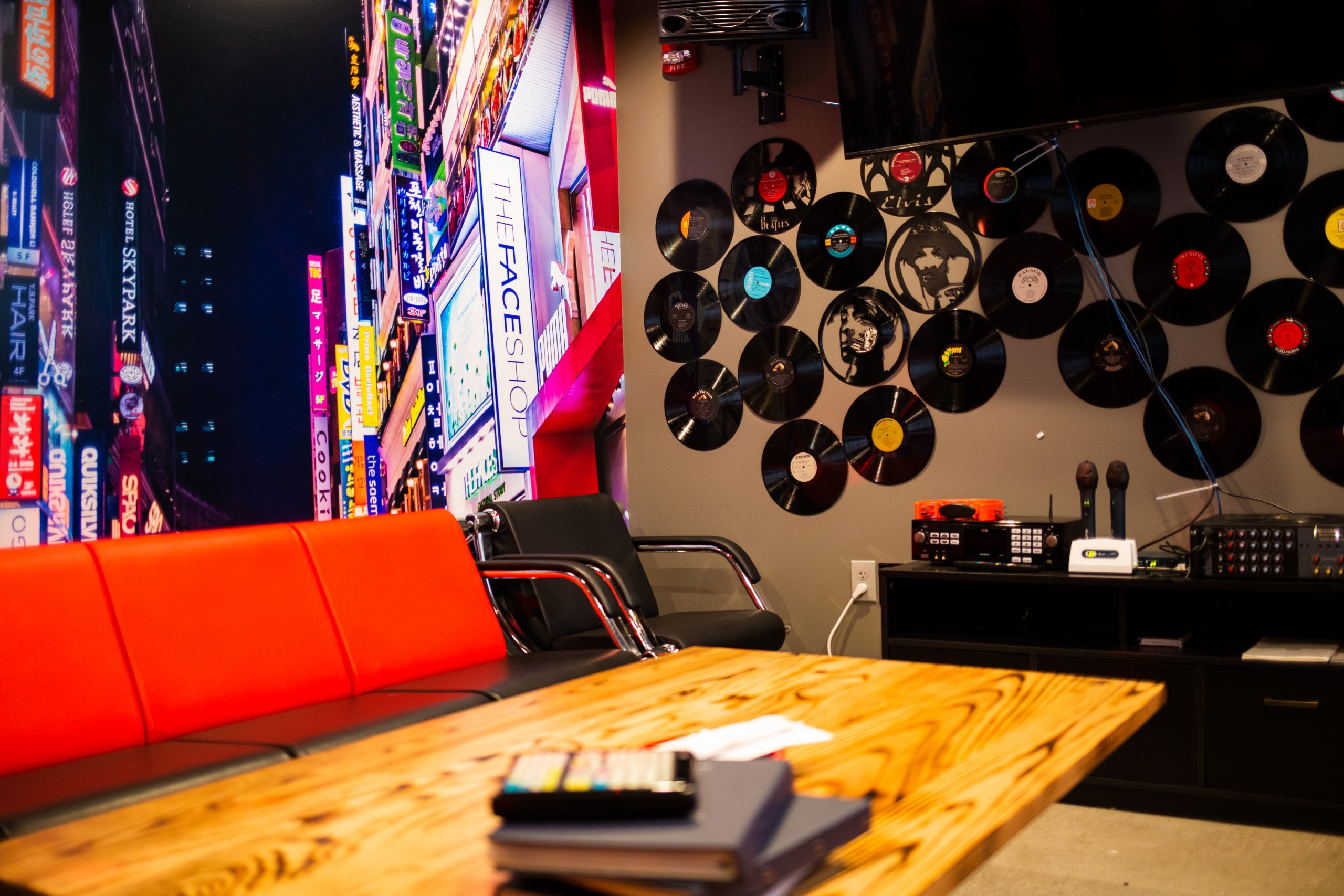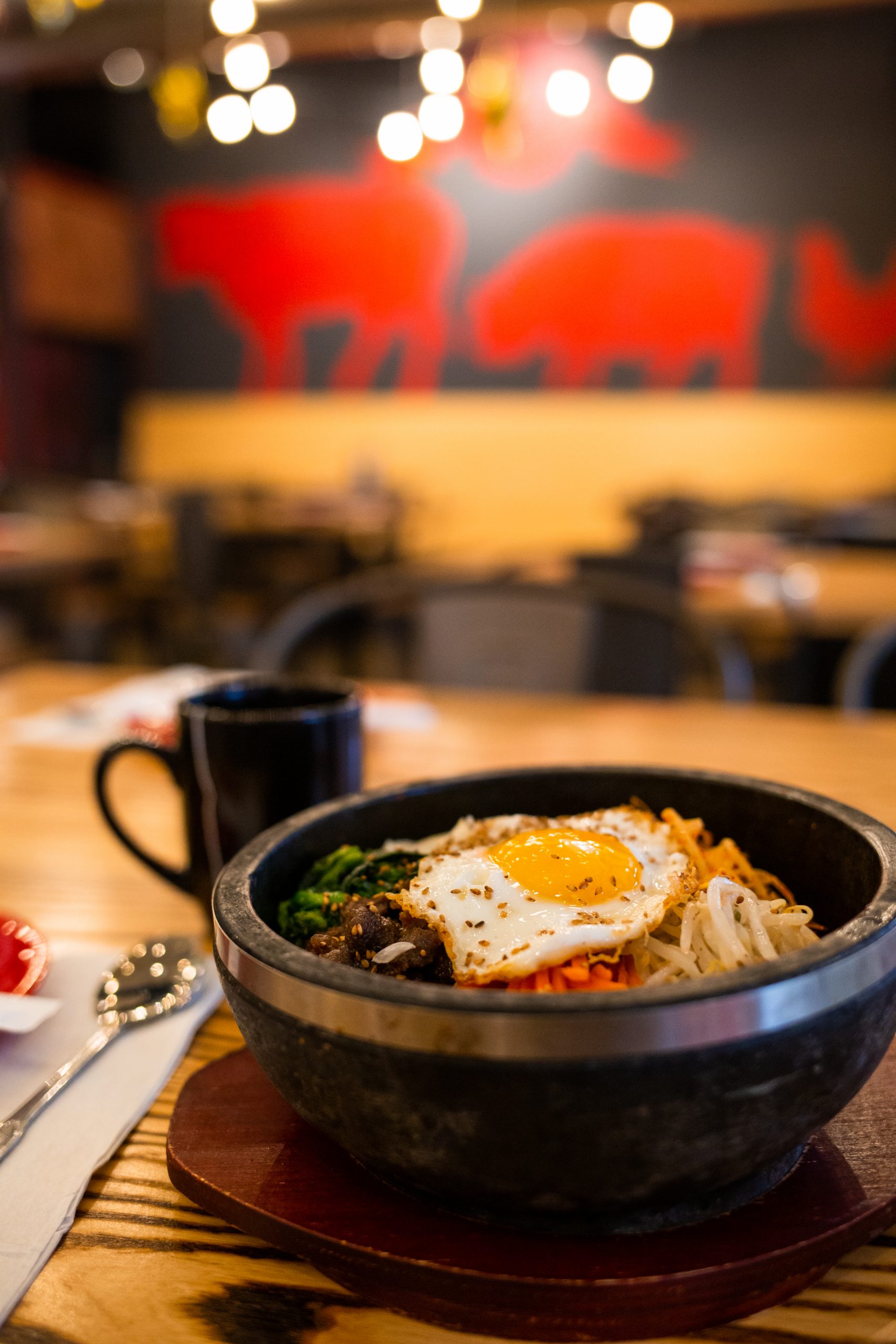This winter, Grand Rapids’ first Korean barbecue and karaoke joint opened at 169 Louis Campau Promenade in the heart of downtown.
K-ROK’s owner and operator, Rob Yoon, opened the new hotspot with hopes of bringing more pop to Grand Rapids’ nightlife while sharing Korean food and culture with the community.
“There’s not much of a Korean presence in the area, so when we were blessed with the opportunity to open downtown, I figured we should start it off and make it happen,” Yoon said.
For those unfamiliar with the concept, Korean barbecue is the experience of cooking meat over a hot grill found in the center of the table.
“It’s similar to American-style barbecue in that we work with lots of different types of meat like pork belly, brisket and ribeye,” Yoon said. “What’s different are the flavors of our marinade, the cuts of meat, and that it’s more of a collective experience.”
For Yoon, the act of making Korean barbecue right at the table can be just as important as the flavor of the dish itself: “Korean barbecue is communal. Everyone is at the table while the food is cooking at the center on the grill, having some banchan (side dishes) and drinking soju. It’s like a big Thanksgiving feast every time!”
The K-ROK experience includes stainless steel grills built right into the tables, a full bar, multiple televisions featuring Korean music videos and private karaoke rooms available by reservation.
What’s in a name?
The K in K-ROK simply stands for Korea. The ROK has a little more backstory. “A lot of people think I sound like Sylvester Stallone. So, my friend, Chef Jenna Arcidiacono from Amore, gave me the nickname KOCKY for Korean Rocky,” Yoon explained. “R-O-K also stands for the Republic of Korea.”
Meat the main event
K-ROK’s menu features numerous cuts of meat prepared in a variety of ways. Some meats are seasoned, some are marinated, and others are served unmarinated before grilling. Marinated meats come in flavors such as soy sauce, toasted sesame oil, gochujang (bold sweet/spicy/umami flavor) and many others.
For newbies, Yoon recommends ordering a mix of beef and pork with marinated and unmarinated preparations. Kalbi (marinated short rib) and samgyeopsal (unmarinated pork belly) always are a safe bet.
When grilling, keep your eye on the meat. Flip the meat from time to time for even cooking. If a piece looks done, place it to the side so it doesn’t overcook. Or better yet, eat it. You can cut larger pieces of meat with special scissors (usually provided) for easy distribution.
Lettuce or perilla leaves are provided on the house and may be used to wrap the grilled meat.
Don’t forget to use the different dipping sauces!
The banchan
These free small plates are meant to complement the main meal. They are found in small bowls set at the center of the table. You’ll usually find kimchi, seasoned sprouts, daikon radish and potato salad. Feel free to ask for refills!
The soups and stews
Like everything else on the table, soups and stews are meant to be eaten with rice. My personal favorites are kimchi jjigae (a stew featuring fermented cabbage and other ingredients, such as pork or seafood, tofu, scallions, onions) and budae jjigae (also known as army stew).
“Back in the Korean War, the Koreans and Americans would have nothing to eat, so they’d throw together whatever they had — like Spam, kimchi, sausage, ramen noodles, rice cakes, tofu, garlic and even American cheese — and made a stew out of it to feed everybody,” said Yoon. “That eventually became the spicy, smooth comfort food known as budae jjigae. I like to think of it as Korean chili.”
The drinks
Wash down your barbecue with a traditional Korean beverage like soju (distilled spirit made from various starchy crops). My favorite flavor is plum.
If you really want to party, order a soju bomb, which is a shot of soju dropped into a glass of beer.
In traditional Korean culture, you should never pour your own drink; the youngest is in charge of making sure everyone’s glasses are full, and you should always receive your drink with both hands.
Other must-try dishes
Not in the mood for barbecue or stew? Try japchae, which is a stir-fry dish featuring sweet potato noodles with seasoned meat and plenty of vegetables. Another well-known dish is bibimbap, which is a rice bowl topped with sautéed vegetables, marinated meat (usually beef), a fried egg, and finished with a sprinkle of sesame and a generous dollop of a sweet-spicy-savory sauce.
Asian karaoke vs. Western karaoke
The perfect Korean barbecue experience is ideally followed by classy private-room karaoke. “Western karaoke is on a stage in front of the entire bar. Some people don’t enjoy that. Asian karaoke is more of an intimate celebration,” Yoon explained. “The private rooms make it so that you can sing and drink with just your friends and you don’t have to worry about embarrassing yourself in front of strangers. There’s even a TV screen that displays the lyrics of the song, so you won’t mess up the words.”
At K-ROK’s karaoke rooms, guests have access to bottle service and can have any non-barbecue item on the menu sent straight to their private party.
Family origins
According to Yoon, K-ROK would not exist without the influence of his mother, Myong Sun Holloway, who came up with all the original recipes.
“She has a gift and doesn’t know how to spread it,” said Yoon. “I don’t know how either, but I’m learning. I hope that through K-ROK, people in Grand Rapids will learn that Korean food and culture is here to stay.”
Yoon’s mother grew up as one of eight siblings. Her mother died at a young age, leaving her in charge of cooking for the family while her father tended to their rice farm. From there, her recipes were born.
Eventually, Holloway migrated to the United States, taught herself how to speak English, and received her high school GED — all while doing jobs like cleaning toilets and working at factories. Throughout that journey, she never stopped dreaming of opening her own restaurant. Today, she oversees the chefs at K-ROK to keep her recipes alive.
For this reason and many others, Yoon chose not to whitewash his menu.
“I want people to understand that Asian cuisine is diverse. Chinese food, Vietnamese food, Filipino food and Korean food are all very different,” he said. “Once upon a time, I was scared and wanted to adapt, so I put things like teriyaki chicken, crab rangoons and fried rice on the menu of Emonae (the family’s restaurant near 28th Street and Cascade Road). For K-ROK, I’ve purposefully taken off those items … and I hope people will give it a shot anyway.”
This story can be found in the March/April 2022 issue of Grand Rapids Magazine. To get more stories like this delivered to your mailbox, subscribe here.














Facebook Comments